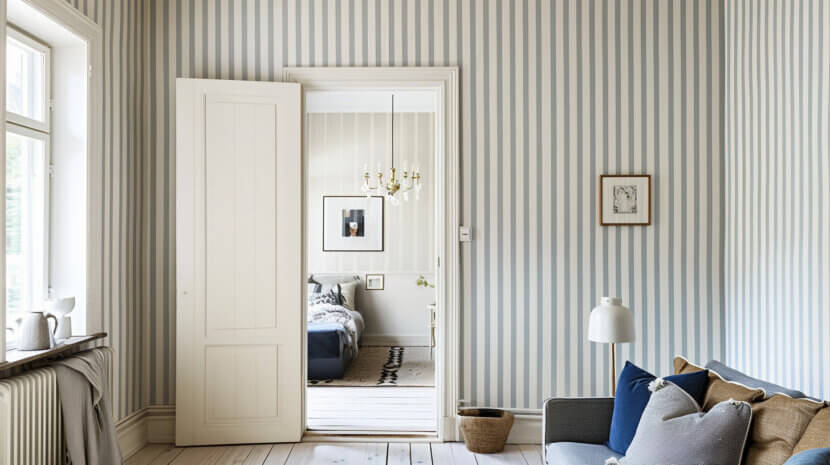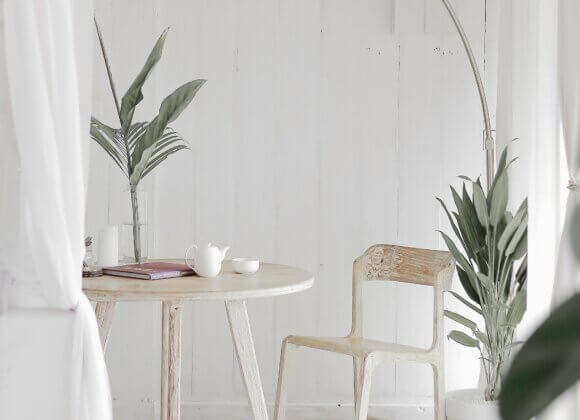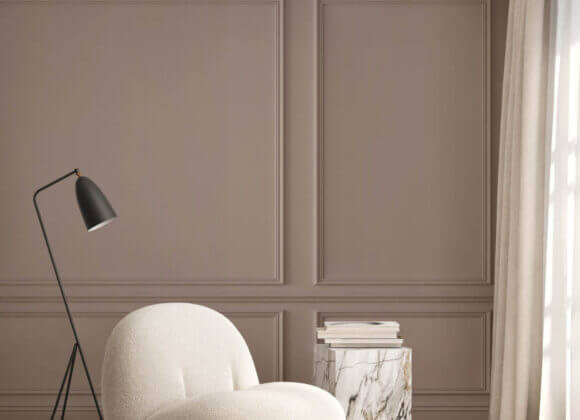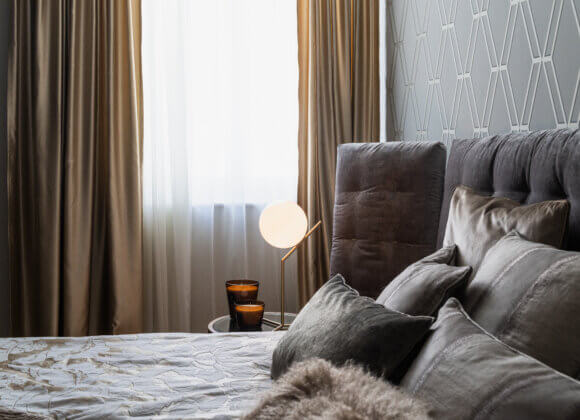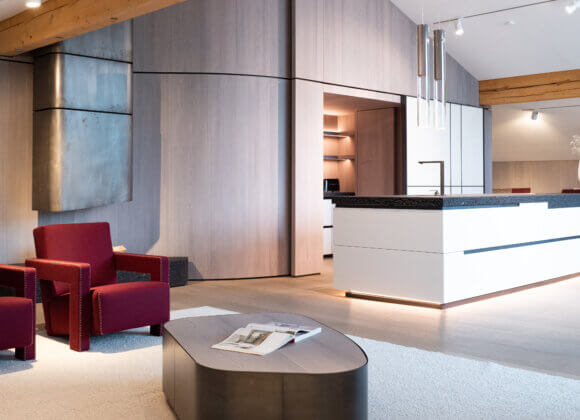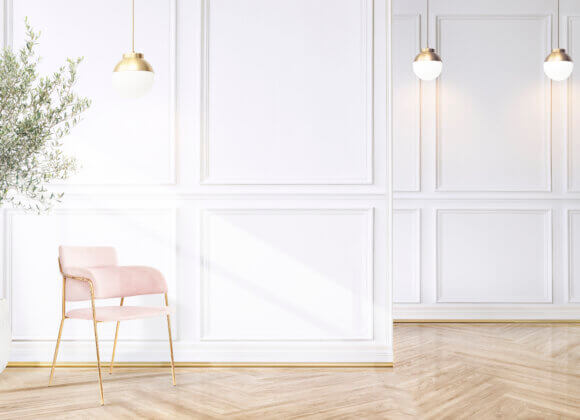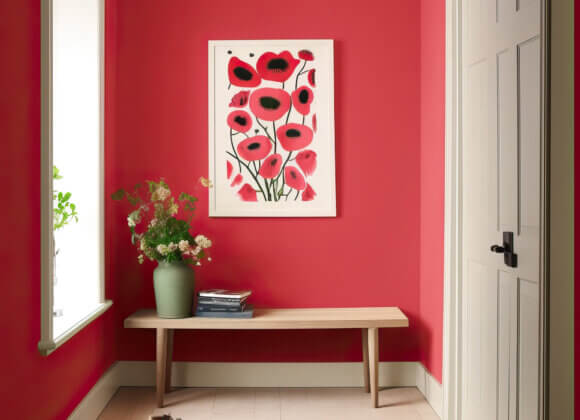This year we are seeing a comeback of a classic pattern: stripes. We focus on this for walls, wallpaper, furniture and accessories.
Stripes have a firm place in the fashion world and are increasingly conquering interior design. And rightly so! After a long phase of minimalist and monochrome designs, we feel the need for stronger visual accents. The two interior experts Stefanie Szöke and Beata Mathke know what is important when using the pattern.
Structure and dynamics through stripes
Stripes transform rooms in a dynamic and creative way, explains interior designer Stefanie Szöke: “On the one hand, striped elements create structure and clarity, but on the other hand they also have a cheerful and playful effect. The respective effect depends heavily on the choice of color and stripe width.” Wide, soft stripes in pastel shades can create a calming atmosphere, while narrow, contrasting stripes in bold colors make a room look lively and modern and radiate energy.
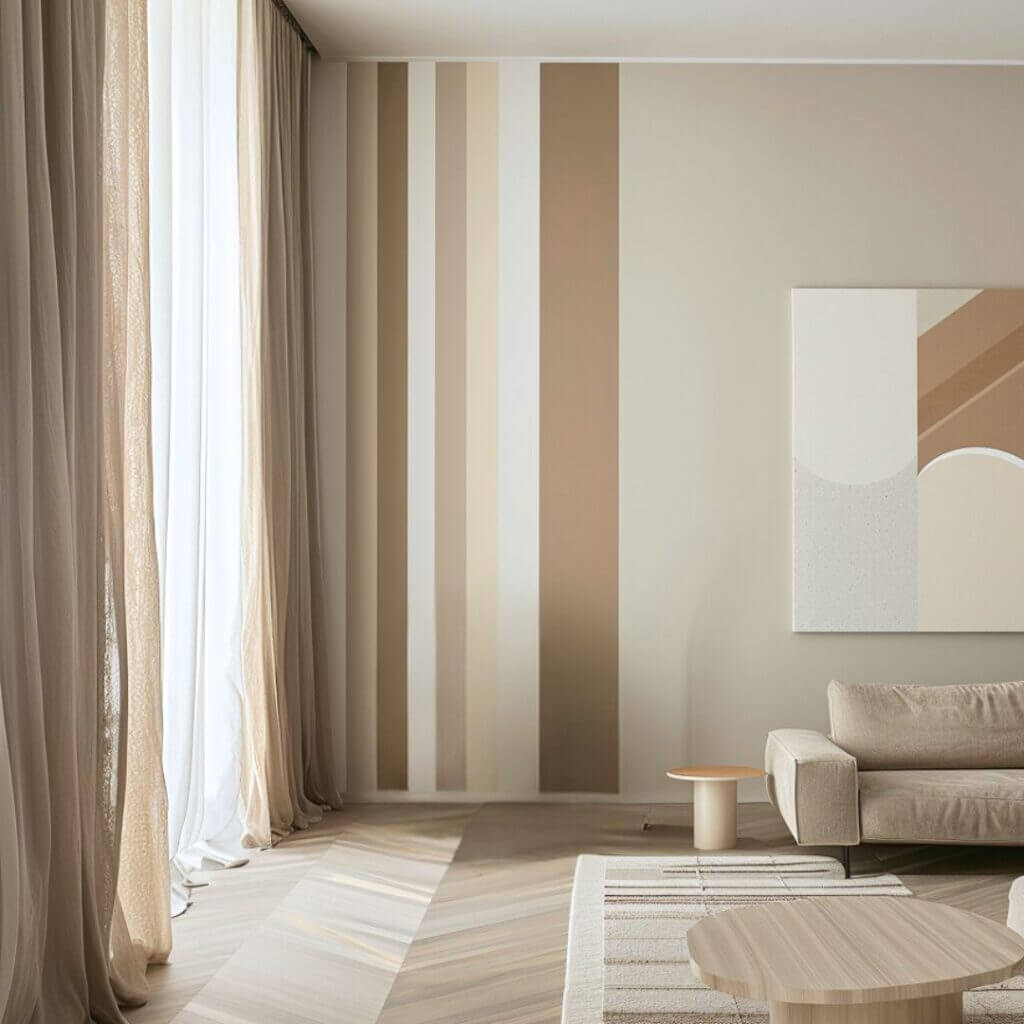
The effect of vertical and horizontal stripes
The arrangement of the strips also has a considerable influence on the effect of rooms. Interior designer Beata Mathke knows: “Vertical stripes draw the eye upwards and make the room appear higher, which conveys a feeling of grandeur and elegance. This is particularly beneficial in rooms with low ceilings.”
Horizontal stripes, on the other hand, emphasize the width of a room and make it appear more stable and wider, which can create a cosy and inviting atmosphere. “Diagonal stripes in turn create a dynamic and energetic effect that makes the room more exciting and interesting,” says the expert.
Wide range of applications
In any case, Mathke advises starting small and checking whether the stripes harmonize with the other furniture and the incidence of light in the room. Szöke adds: “Ideally, you should start with a room where you generally don’t spend a lot of time, such as the hallway or the toilet. A single piece of striped furniture or accessories such as rugs, vases and lampshades can also be a great eye-catcher.”
According to the expert, it is also important not to use too many different striped patterns: “This makes the room look cluttered. To achieve a harmonious overall look, it is better to combine striped elements with simple and elegant objects.” She also recommends avoiding overly wild color combinations.

Stripes and furnishing styles
Striped walls, wallpaper, carpets and curtains go particularly well with the following designs:
- Minimalist: Neutral colors and clean lines dominate, resulting in a simple and calm aesthetic that is reduced to the essentials.
- Scandinavian: Light and natural colors are in the foreground, combined with functional design and a focus on cosiness and simplicity.
- Boho: Bold and vibrant colors dominate, complemented by a variety of patterns and textures that create a warm and eclectic atmosphere.
- Contemporary Classic: This style combines modern and classic elements, whereby different stripe variants can go well with the existing furniture and accessories to create a timeless and elegant ambience.
- Mid-Century Modern: Characterized by clear lines, organic shapes and a functional aesthetic. Bold, horizontal stripes harmonize particularly well with this style and complement its retro-inspired elegance.
- Coastal: Inspired by the coast, this style often uses striped accessories in blue and white, red and white or beige and white to create a fresh and airy atmosphere.
Striped patterns offer endless design possibilities and lend every room a timeless elegance that fits perfectly into modern living concepts.
All photos: @Liveyourhome
Related posts:
Home design: A touch of Africa in Straden


